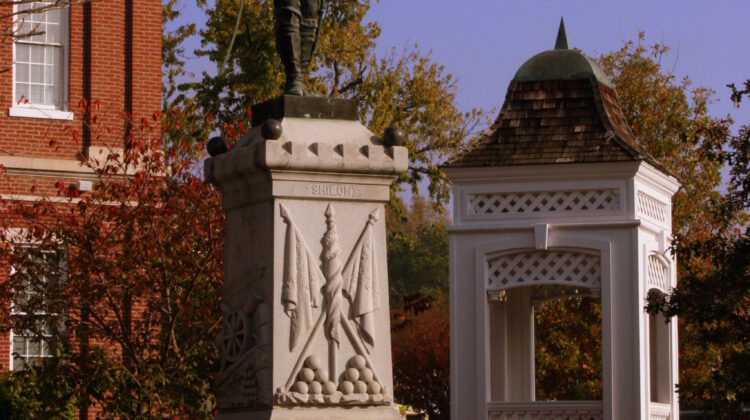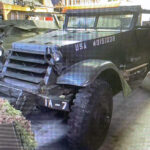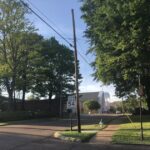

With his sword drawn, he’s been standing in memory of Confederate soldiers for more than a century. But will he be proudly standing 100 years from now?
Not if Matthew Pryor has anything to say about it.
“I think it represents a painful past, it brings a lot of ill feelings back,” he said. “I think it needs to go.”
Pryor was one of the organizers of the Unity Walk in Covington two weeks ago. The march has been praised in the community, including by local leaders, for being peaceful. Now he wants to bring peaceful, productive discussion to the county commission.
“I want to go to them in the right way, in the correct way, because I want them to listen to us and not blow us off. We want to go to them with a plan.”
He knows it’s a tough request with a lot of opposition.
Across the country statues of Confederates are being removed – either by protestors or by the local government – and vandalized. That’s not what Pryor wants.
“We want this to be positive, to be good, we want this to be peaceful. We don’t want anything to bring harm, we just want results. When we do go we want to have a plan.”
Across the country, and in Tipton County, the opposition to removing the statues draws upon preserving Southern history and heritage. The statue has been on the square since before the turn of the 20th century.
“The Confederate veterans for 20 years raised money to erect a monument on the square,” said county genealogist David Gwinn in an interview two years ago. “The monument said 1894, but it was dedicated in 1895.”
It honors those who served and remembers those who died, said Gwinn.
“It was for all Confederate soldiers, not just one.”
The inscription reads, “To the Confederate soldiers of Tipton County, whose courage in war, and virtues in peace, have illustrated the highest type of American manhood.
“‘Nor braver bled for a brighter land, nor brighter land had a cause so grand.’”
Soldiers from Tipton County played a very active part in the Civil War, training at Ft. Randolph and Ft. Pillow and traveling all over the southeastern United States defending the Confederacy.
Russell Bailey, who chronicles the history of Tipton County’s soldiers weekly in The Leader, is vehemently opposed to the statue’s removal.
“It’s a war memorial protected by the state and it honors soldiers from Tipton County who fought in the War Between the States,” he said. “I don’t see what that accomplishes. It was about honoring their bravery. Most of them didn’t even own slaves.”
He said pursuing the statue’s removal – which he called a “manufactured and made up issue” – is a waste of time and a waste of the county’s taxpayer dollars.
Though it is in the heart of the City of Covington, the statue is actually on county property. Removing it isn’t actually as simple as asking the county commission nicely, however.
The Tennessee Heritage Protection Act, which was enacted in 2013 and amended in 2016 and 2018, “prohibits the removal, relocation, or renaming of a memorial that is, or is located on, public property.”
Pryor – who no longer lives here but graduated from Covington High School in 1997, operated a business for several years and also ran for mayor of Mason in 2003 – said he knows it’s a polarizing issue to even discuss. He understands the strong feelings on both sides.
“I’m not here to cause any malice or erase anyone’s history, but being a Black man and having children, they ask what the statue stands for … I have to tell him the truth,” he said. “It does cause hurt and reminds us of the pain our grandfathers and mothers went through. I want a correct representation of what they were going through.”
Pryor believes the statue belongs in a museum.
“We need something there to represent where we stand now, where we’re trying to go.”
And while there are people vocal about keeping the statue in place and people vocal about it’s removal, there are also some who believe the answer may be in the middle somewhere.
Tipton County NAACP President Chris Brent said a lot of people have never read the statue’s inscription and don’t understand its intentions.
“It’s part of history and its dedicated to the people who fought in the war.”
Like Pryor, he does not support removing the statue unless it’s done legally. He does recommend representation for those who have fought in wars since the statue was dedicated.
“Maybe it’s time to add another statue somewhere,” Brent said. “Maybe we can add to it so we represent all of the people who’ve fought in wars since then.”






Leave a Reply